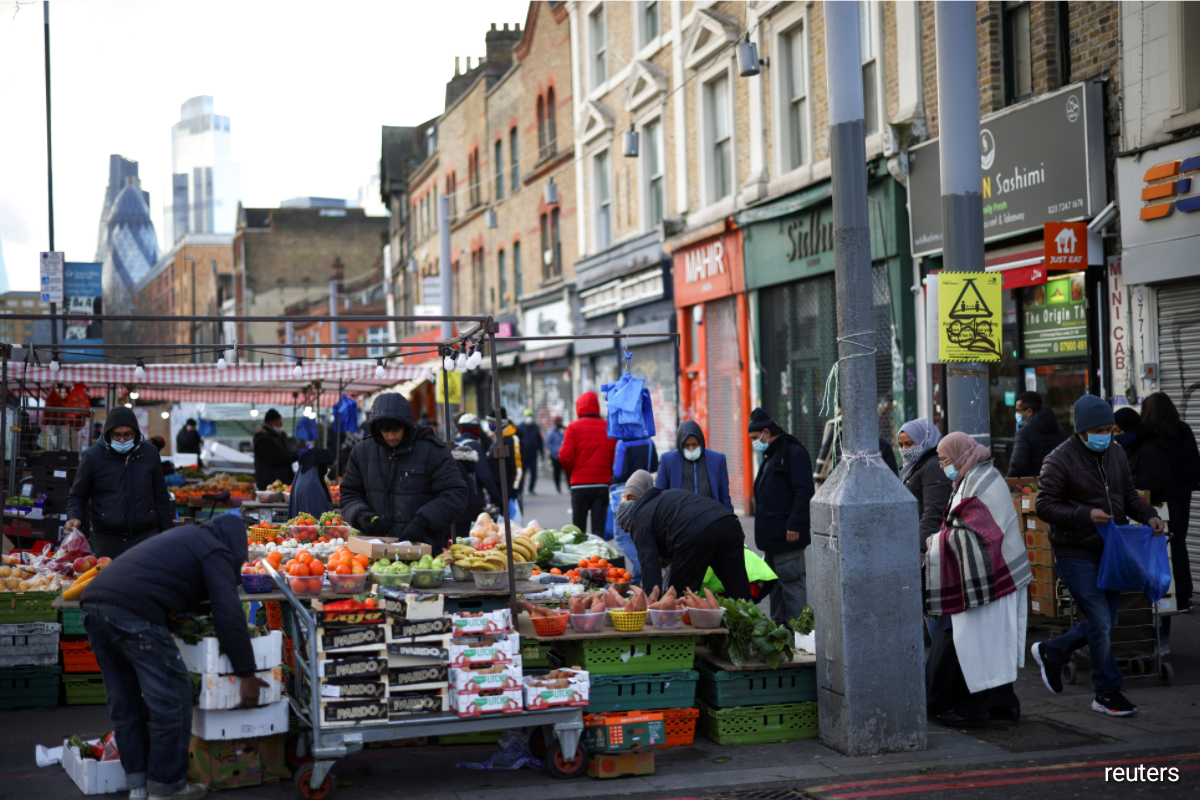
(Feb 3): The Bank of England said workforce drop-outs have become an economic dead weight that has left the UK facing its bleakest outlook in generations.
In one of the most dismal forecasts it has produced, the central bank said the economy is already in recession and will struggle for growth even when the downturn is over. Pre-pandemic levels of output won’t return until 2026, and even a minimal expansion — more than 0.7% a year — would risk a resurgence in inflation.
The conclusions add to pressure on Prime Minister Rishi Sunak’s government to fix long-term structural issues dragging down the economy. Those include lacklustre productivity, trade friction following the UK’s departure from the European Union and, perhaps most of all, a shrinking workforce.
“Since the start of the pandemic, we have seen a large increase in the number of people who do not take an active part in the labour market,” BOE governor Andrew Bailey said as he explained why he was raising borrowing costs as the UK heads into a recession. “This significant and lingering fall in the labour supply weighs on the UK economy’s potential.”
The BOE’s figures are even more pessimistic than forecasts published by the International Monetary Fund earlier in the week. Together, they add to the sense of malaise in a country that’s likely to trail the Group of Seven nations and suffer the tightest cost-of-living squeeze in generations. A series of governments have tied themselves in knots to find a credible plan for growth, with little to show for it.
Sunak has pledged to halve inflation and get the economy going again before the election, which must be held by 2025. But the BOE projects little growth before then, leaving 500,000 more people unemployed.
The Resolution Foundation research group said that once the post-Brexit period is included, the outlook marks “the weakest 20-year period of growth since 1938".
Chancellor of the Exchequer Jeremy Hunt said the BOE was right to raise rates and that the priority above all is to control inflation.
“We recognise it is very difficult for families, businesses, up and down the country,” Hunt told broadcasters on Thursday. “But much harder for them would be if we didn’t take decisive steps to bring down inflation.”
Signs the BOE may be near the end of its quickest cycle of interest rate increases in three decades provide a glimmer of hope. Chief economist Huw Pill on Friday said policymakers need to make sure they don’t hike rates too far.
“It’s important that as I’ve said we do enough to attain our objective — return inflation to within target — but of course it’s also important that we enguard against the possibility of doing too much,” Pill said in an interview on Times Radio.
According to the bank, the UK is already in recession and will shrink almost 1% over the coming five quarters. But the bigger surprise was its downgrade to potential growth — the economy’s speed limit above which activity simply generates excess inflation.
The BOE estimates that by 2025 the UK will be able to grow only 0.7% a year — less than half the 1.7% pace prevailing in the decade before Covid-19 struck. It’s also far lower than the 2.7% level before the 2008 financial crisis. Deputy governor Dave Ramsden described the outlook as “so unusually weak.”
The huge downgrade suggests the UK faces a period of chronic stagnation that will mean higher interest rates, more unemployment and less tax revenue, making it harder for the country to drag itself out of its funk.
The BOE said the main reason for the collapse to a trend rate more familiar in Japan and Italy, both of which have endured so-called “lost decades,” was the UK’s shrunken workforce.
“There appears to be increasing detachment among those who have left the labour market,” the bank said in its quarterly Monetary Policy Report. “Over 80% of working age people who are inactive state that they do not want a job, almost 3 percentage points higher than before the pandemic. These people are unlikely to re-enter the labour force.”
Uniquely among major industrialised economies, “in the UK the fall in participation in Covid has not reversed course,” Bailey added.
Potential growth is determined by productivity and labour supply, and Britain is weak on both counts.
Before the 2008 financial crisis, productivity was the driving force — averaging 2% a year, the BOE said. Afterward, productivity crashed to just 0.5%. But at that time, the economy’s overall supply potential was held up by high levels of immigration, benefit changes that encouraged more people into work and an increase in people working later into life.
Each of those factors has now reversed. The BOE’s projections now show there is a crisis in labour supply as well as productivity, with roughly 500,000 more inactive working age people than before Covid.
Brexit has contributed to the problem too, limiting the flow of EU workers into the UK.
“Since 2016…lower net migration from the European Union has only partially been offset by higher migration from outside the EU,” the BOE said. The ageing population is also a factor, as older people retire.
Another feature has been the sharp rise in people declaring inactivity due to long-term sickness since Covid hit. That “may point to a decline in participation persisting for longer than previously estimated,” the BOE said.
“There is an increase in the part of the population that, when asked why they are not returning to the market, cites long term health conditions,” Bailey said. “I don’t think that’s the proximate reason for leaving the labour force. So it’s important we know a lot more about why this is happening and what can be done to reverse it.”